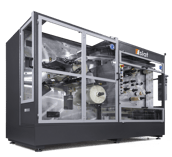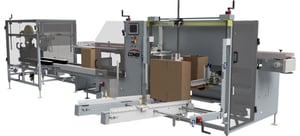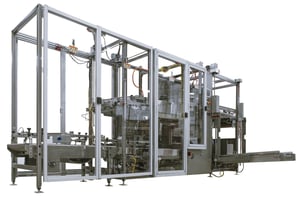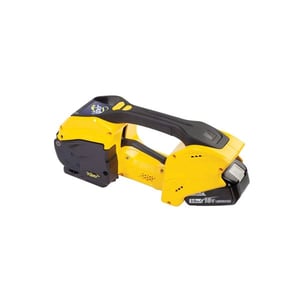When is it time to make the next investment in packaging automation?
For small-and-growing producers of packaged goods, it’s a question that gets answered over and over again.
Early automation investments tend to focus on manufacturing processes, since that’s where the value is created.
But material handling and transport account for roughly 15 to 25 percent of a product’s retail price (it varies widely)—so if there’s one last place for profit margins to slip away, it’s end-of-line packaging.
“By the time you start talking about case erectors, case packers and case sealers, you’re at the part of the process where the product is already finished and the money has been earned,” says Mark Freidly, senior regional sales manager at Combi Packaging Systems. “The rest is just a necessary evil to get the product into a store. So every penny you spend on end-of-line packaging is coming out of the profit margin.”
Most manufacturers understand this. They know that every time you touch a product, it chips away at the bottom line. What they often don’t realize is how many extra touches there really are.
“Every time you twist the product to get it into a case or a box, that’s a touch,” Freidly says. “Every time you turn a box to tape it, that’s a touch. These things add up quickly.”
Based on averages from the Bureau of Labor Statistics, if a case erector and packing cell can take three operators off a packaging line, the labor savings alone amount to nearly $200,000 per shift per year. It’s not unusual to see full payback on such automation in 18 months.
A simple rule of thumb is that if you’re filling 200 boxes, cartons or cases per day, it’s time to think about some kind of mechanized assistance—perhaps a hand-packing station flanked by a case erector on one side and a sealer on the other.
There are a lot of variables, so that 200-carton threshold won’t always hold up. But by the time daily volume reaches 600 boxes or cases, it’s almost certain that end-of-line automation will quickly pay for itself.
“The first thing I notice when I visit a facility is the number of people doing multiple functions with lots of movements,” Freidly says. “If I see three or four people grabbing boxes, doing tasks in a manual way, I’m seeing profits slipping away. I see an opportunity to make meaningful improvement with automation.”
For many companies facing chronic labor shortages, automated end-of-line packaging isn’t even about saving money; it’s about having confidence on Monday morning that the week’s orders will all go out on schedule.
For smaller companies, Freidly recommends an incremental approach to automating end-of-line packaging.
“A few years ago, a new customer bought a case erector, hand-packing station and case sealer,” he says. “Almost as soon as they started running it, they knew they were going to need more automation if they continued to grow—which they did.”
Within two years, Freidly helped the company add a robotic arm to the packing station.
“That approach is pretty common. And because we handle everything from tray formers to palletizing and load stabilization, it’s one of our selling points,” he says. “We can start a company at an entry level with a machine to assemble boxes, and they can grow with us for life.”
Is it time to add end-of-line packing automation to your operations? Contact Combi Packaging Systems for a conversation and honest analysis of your situation.

.png?width=172&name=End%20of%20Year%20Sale%20Equip%20Drop%20Down%20(172%20x%20157%20px).png)






.png?width=161&name=ProWrap%20(1).png)


.jpeg?width=300&name=AdobeStock_618778631%20(1).jpeg)